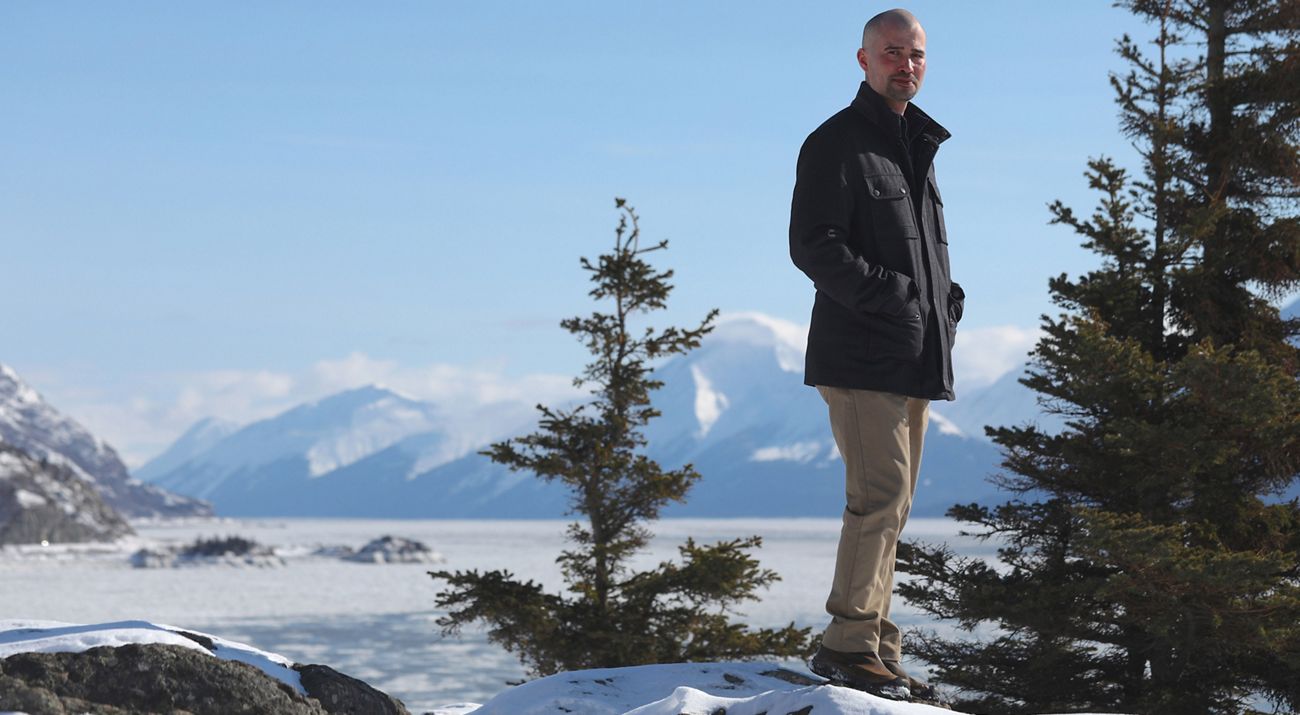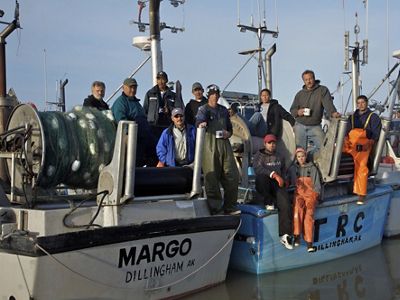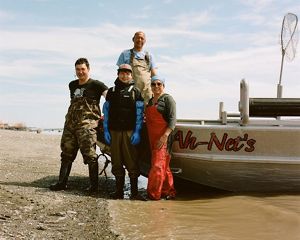
Meet TNC's Bristol Bay Program Director: Rayn Aaberg
Leading our commitment to sustainable community development and conservation in Bristol Bay.
Rayn Aaberg (Dena’ina Athabascan and Yup’ik Eskimo) is TNC’s new Bristol Bay program director. He holds strong ties to his home in Pedro Bay and is a third-generation commercial salmon fisherman. Rayn mostly grew up in Iliamna, where his parents were school teachers. He and his wife and three children currently reside in Anchorage during the winters and travel back to the region every summer to visit family and work the fishing season.
Rayn is an expert in Bristol Bay regional economic and community development. Rayn has worked to secure business opportunities that enrich his village of Pedro Bay and neighboring villages in the region. He has also dedicated his career to creating innovative ways to sustain and modernize village life, while also helping young people experience traditions that support the local way of life.
Previously, Rayn served as president and CEO of the Pedro Bay Corp., where he led successful conservation and construction initiatives including the Nilavena Conservation Project.
Tell us about your relationship with Alaska’s Bristol Bay.
Bristol Bay is everything to me, it is the place I call home and where all my fondest memories began and continue to grow. This place always calls me back, like a salmon to a stream. My family heritage is that of Bristol Bay, my father is from Dillingham and my mother is from Pedro Bay. My career path has taken me throughout this vast landscape in representing village entities, commercial fishing and working on numerous environmental and construction projects throughout the Bay.
How did you get started in the fishing life?
My grandfather Elleph Aaberg started out drift boat fishing in the 1950’s after moving to Dillingham, Alaska from Minnesota. In 1960 set netting sites opened on Ekuk beach, near Dillingham. Ekuk is a small village with a booming seasonal population, this is where my family and I continue to commercial fish every summer. I am a third-generation commercial fisherman and my start came at age 7—just tall enough and strong enough to hold a big king salmon. I did not have much of a choice about getting into the fishing industry, but I wouldn’t trade it for the world.
The proposed Pebble Mine is a major threat to the region. How can TNC help to secure the future of Bristol Bay and its way of life?
The Pebble deposit has been and will always be considered a threat to the region’s lands and waters, and the way of life in Bristol Bay. Yet the lack of a truly sustainable economy also threatens our region, since commercial fishing is strictly seasonal. The Nature Conservancy can help change this by partnering with local communities to bring financial and human capital to an underserved region brimming with possibility.
What’s your vision for the future of Bristol Bay’s communities?
The tides have turned in favor of protecting the Bristol Bay fishery. The timing is now right to place permanent protections on the Bristol Bay watershed to stop large-scale mining.
Meanwhile, I envision Tribal leaders in Bristol Bay speaking with a collective voice for positive sustainable development in a place that has been stewarded by local tribes since time immemorial.

Bristol Bay is far from Alaska’s major population centers and many people have never been able to experience it firsthand. As someone from Bristol Bay, can you give us a sense of what it’s like to be surrounded by nature on such a grand scale?
You can feel so small, yet at peace. There are plenty of adventures in every corner of Bristol Bay. I have a running list of places I still want to see. It is nice to have solitude at times, but it is always a much better trip when you can take someone who appreciates the great outdoors, because they’re so blown away with it being nature’s playground.
What does the annual return of wild salmon mean to the people of Bristol Bay’s 32 communities?
Harvesting wild salmon is a way of life in Bristol Bay. The lakes, rivers and ponds all throughout the forests, tundra and mountains of the Bristol Bay headwaters are also the source of a sustainable commercial fishing industry valued at $2.2 billion annually. That’s year after year after year. For local communities, every single commercial fishing boat is a valuable small business with crew members that relies first and foremost on a healthy fishery. In Bristol Bay, people have always taken care of the fish and their habitat, and the fish have always taken care of us. This is a relationship we must never forget. It can’t ever be overlooked. The right to fish these waters and protect it as one cornerstone of a diverse rural economy is worth protecting and nurturing in every way we can.
I have to ask: What’s a good day fishing look like to you?
A good day of fishing is any day, rain or shine. A great day commercial fishing is a boiling net, when every web has a salmon in it! The best day is taking a break from work and fly-fishing a crystal clear river for that trophy rainbow that hopefully won’t break the line!


